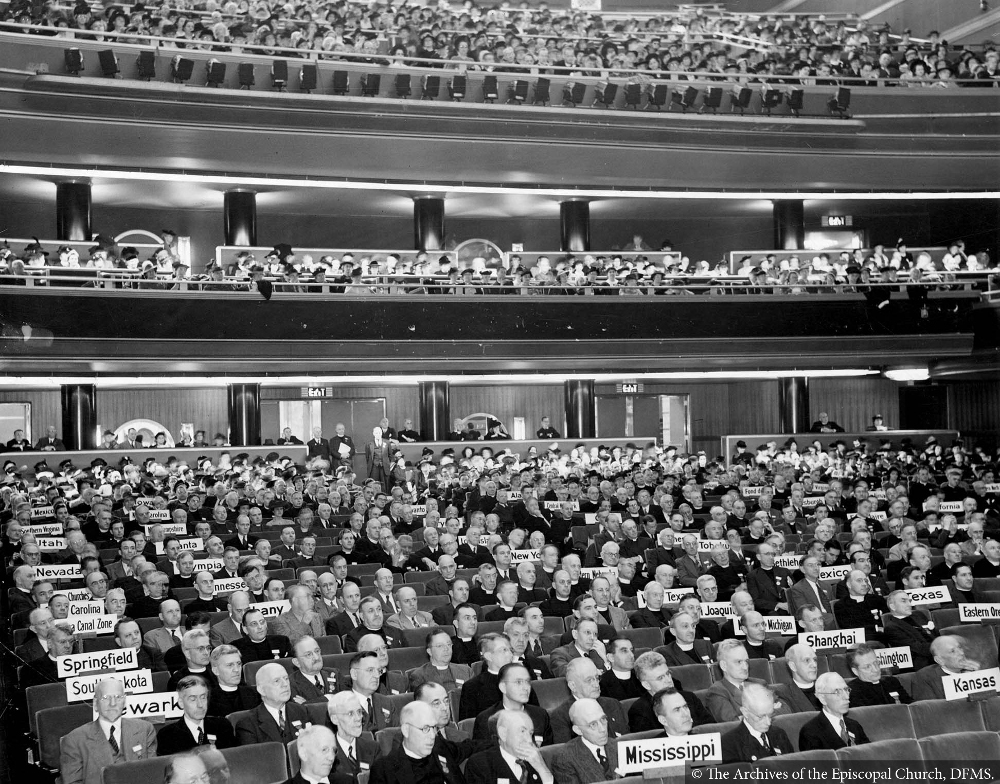The House of Deputies: "The Senior House"
The House of Deputies was originally established with the General Convention as its sole representative body. After the Revolutionary War, Episcopalians representing eight of the new American states met unofficially in 1784 to draft an Ecclesiastical Constitution, which was formally approved in 1785 by sixteen clergy and twenty-four laymen from seven states. Although the order of Bishops was eagerly sought and anticipated in the Constitution, and Bishop Samuel Seabury of Connecticut had been consecrated in Scotland in 1784, the Constitution of the Protestant Episcopal Church did not provide for a House of Bishops until 1789.
The colonial Church emerged in the new United States in a fragile condition and in danger of becoming an obsolete footnote to the country’s religious pluralism. Immediate action was required to unify it. At the time of the Revolution, there was no American episcopate, and there was no time to wait for its establishment. In any case, bishops in the Church of England were state officials who wielded disproportionate power over the other orders. The American branch of Anglicanism, shaped by the familiar governing traditions and participatory spirit of the Republic, aimed to be a more representative body.
The Constitution adopted in 1789 reflected the fact that, by then, both Rev. William White and Rev. Samuel Provoost had been consecrated in England, and Article 3 of the Constitution established the House of Bishops as a “house of revision,” bringing the governance structure of the Church in parallel with the model of state and national governments. The Episcopal Church in the United States reflects the spirit of its people, and the House of Deputies, throughout its history, has aspired to be an effective and democratic voice for the Church’s lay people and clergy. While it can claim its share of past mistakes and missed opportunities, the House of Deputies has adopted in the modern period governance models and rules that serve to diminish institutional tendencies of over-centralization, hierarchical and clerical overreach, and exclusivity.

